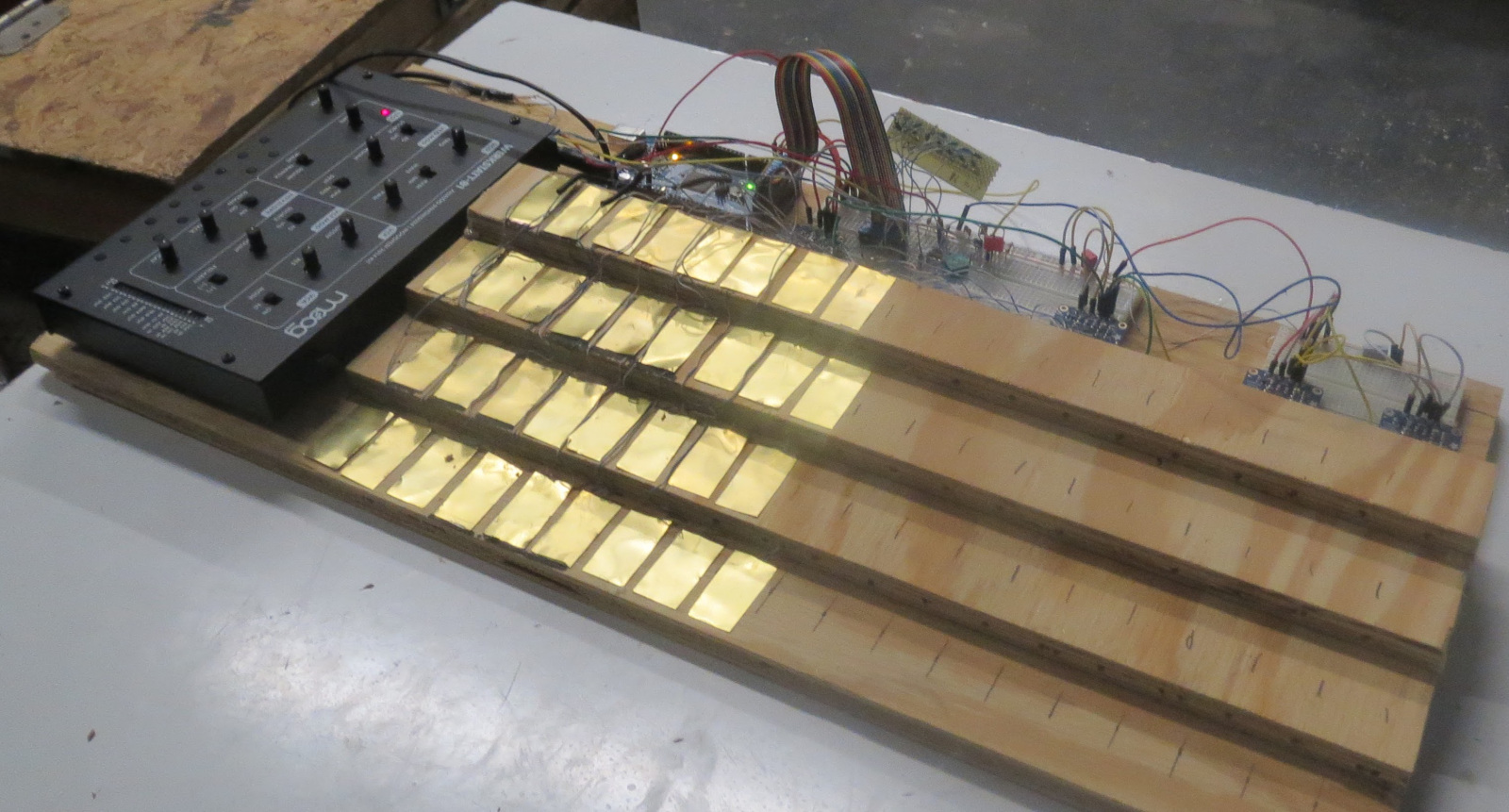A capacitive touch Jankó keyboard

If you have even a passing familiarity with how to play a piano, you know that there are a bunch of long white keys, with a lesser number of black keys in a nearly-universal arrangement. On the other hand, like the standard and much lesser-known Dvorak keyboard for typing, there are alternatives. One such alternative is the Jankó keyboard, which Ben Bradley decided to reconstruct for the Moog Werkstatt using a capacitive touch sensor setup.
His new instrument, which as of his write-up only had 13 keys connected, was constructed for the 2017 Moog Hackathon at Georgia Tech. It uses an Arduino Mega for control along with four MPR121 capacitive touch breakout boards, and as seen in the video below, can be played quite well after only one day of practice!
You can find more details on his build, including its Arduino code, on the Freeside Atlanta website and check out its feature on Hackaday here.
(Photo: Nathan Burnham)
June 14th, 2017 at 17:44:36
best sound ever
🙂
May 15th, 2019 at 00:00:33
How many of those MPR121 capacitive touch breakout modules can be wired to what kind of Arduino, at once?
If I would like to make a harpsichord -sized keyboard, what architecture should I use?
May 15th, 2019 at 00:02:16
Can somebody post a link for the wiring circuit for the modules and tell me how I can increase the number of keys?
Thank you.